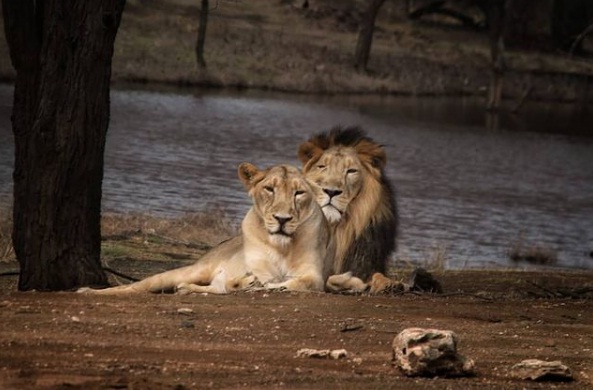Rani ki Vav (Ranki vav) is a stepwell located in Patan, Gujarat, India. It is located on the Saraswati River. Its construction is attributed to Udayamati, daughter of Khengara of Saurashtra, Queen of the Solanki dynasty in the 11th century, and wife of Bhima I. Muddy. It was rediscovered in the 1940s and restored by the Bureau of Archaeological Survey of India in the 1980s. Since 2014, it has been listed as one of the UNESCO World Heritage Sites. It is one of the best and largest examples of its kind. It is designed as an inverted temple that highlights the sanctity of water. The steps are divided into seven stairs and sculpture panels; more than 500 main sculptures and more than 1,000 small sculptures Combines religious, mythological, and secular images. Rani Ki Vav is the best location for pr-wedding shoot lovers.
Also, check this - Faroe islands denmark
Rani ki Vav (Ranki vav) History
Rani ki vav was built during the reign of the Chalukya Dynasty. It is located on the Saraswati River. Prabandha-Chintamani, written by Jain monk Merutunga in 1304, mentioned: “Udayamati, daughter of Narawaraha Khengara, built this novel in Shripattana (Patan), which surpassed the glory of Sahastralinga Tank.” According to him, the ladder The pit was put into use in 1063 and took 20 years to complete. It is generally believed to commemorate Bhima. It was created by his queen Udayamati (Udayamati), which may have been completed by Udayamati and Garna after her death, but whether she was a widow at the time of commission is controversial.
The curator set the construction date to 1032 because it is similar to the Vimalavasahi temple on Mount Abu built in the same year. The stepwell was later submerged and deposited by the Saraswati River. Henry Cousins and James Burgess visited it in the 1890s, when it was completely buried in the ground, only the shaft and some pillars were visible. They described it as a huge 87-meter (285-foot) shaft. In Travels to West India, James Todd mentioned that the material of the stepwell was reused in another stepwell constructed in modern Patan, which may be Trikam Barot ni Vav (Bahadur Singh’s stepwell).
In the 1940s, excavations under the Vadodara Manor revealed stepped shafts. In 1986, the Archaeological Survey of India (ASI) carried out a major excavation and restoration. An image of Udayamati was also discovered during the excavation. The restoration work was carried out from 1981 to 1987. Rani ki vav has been declared an important national monument and protected by ASI. It was included in the UNESCO World Heritage List on June 22, 2014. At the 2016 India Health Assembly, it was named the Iconic Cleanest Place in India.
Architecture of Rani ki Vav (Ranki vav)
Architecture Rani ki vav, from top rain ki vav is considered to be one of the best and largest examples of layered architecture in Gujarat. It is built at the height of the craftsman's skill in building stepped shafts and the architectural style of Maru-Gurjara, which embodies the mastery of this complex technique and the beauty of details and proportions. The architecture and sculptures are similar to the Vimaravasashi Temple on Mount Abu and the Sun Temple in Modra. It is classified as a Nanda-shaped step. It is about 65 meters (213 feet) long, 20 meters (66 feet) wide, and 28 meters (92 feet) deep. The fourth floor is the deepest, leading to a rectangular water tank 9.5 meters (31 feet) long by 9.4 meters (31 feet) and 23 meters (75 feet) deep. The entrance is located in the east, and the well is located at the westernmost end and consists of a well with a diameter of 10 meters (33 feet) and a depth of 30 meters (98 feet).
Also, check this - Grand canyon national park
The steps are divided into seven stairs, leading to a deep circular shaft. The stepped corridors are separated by fixed intervals, and there are multi-level pavilions with pillars. The walls, pillars, pillars, corbels, and beams are decorated with carvings and scrolls. The niches on the side walls are decorated with beautiful and delicate figures and sculptures. There are 212 pillars on the steps. There are more than 500 major sculptures and more than a thousand small sculptures, which combine religious, mythological, and secular images, usually referring to literary works. The stairwell pattern represents the entire universe inhabited by gods and goddesses men and women; monks, priests, and laymen; animals, fish, and birds, including real and mythical ones; and plants and trees. The steps are designed as underground temples or inverted temples. It has spiritual meaning and represents the sacredness of water.
The ladder well sculpture depicts many Hindu gods, including Brahma, Vishnu, Shiva, Devi, Ganesha, Kubera, Lakulisa, Berawa, Surya, Indra And Haya Griva. The number of sculptures related to Vishnu surpasses all those including Shesha Sayi Vishnu (Vishnu lying on the sand of thousand-headed serpents in the sky), Vishnu Vishnu (the cosmic form of Vishnu), twenty-Four forms, and Dashavatara (ten incarnations) of Vishnu. There are deities and their families, such as Brahma-Savitri, Uma-Maheshwar, and Lakshmi-Narayan. Other sculptures include Ardhanarishwara, and numerous goddesses such as Lakshmi, Parvati, Saraswati, Chamunda, Durga / Mahishasurmardini Twenty Hands, Kshemankari, Suryani, and Saptamatrikas.
How to reach Rani ki Vav
By road
Rani Ki Vav is from the city of Ahmedabad which is 122 km away. Buses and rented vehicles are available between Ahmedabad and Patan.
By train
The nearest railway station is Mehsana which is at a distance of 54 km from Rani ki Vav. You can take a bus or cab from Mehsana to reach Patan. It takes only 1 hour 10 minutes.
By flight
The nearest airport to Rani ki Vav is Ahmedabad airport at a distance of 125 km. You can take a bus or a cab from the airport to reach Rani ki vav.




0 Comments